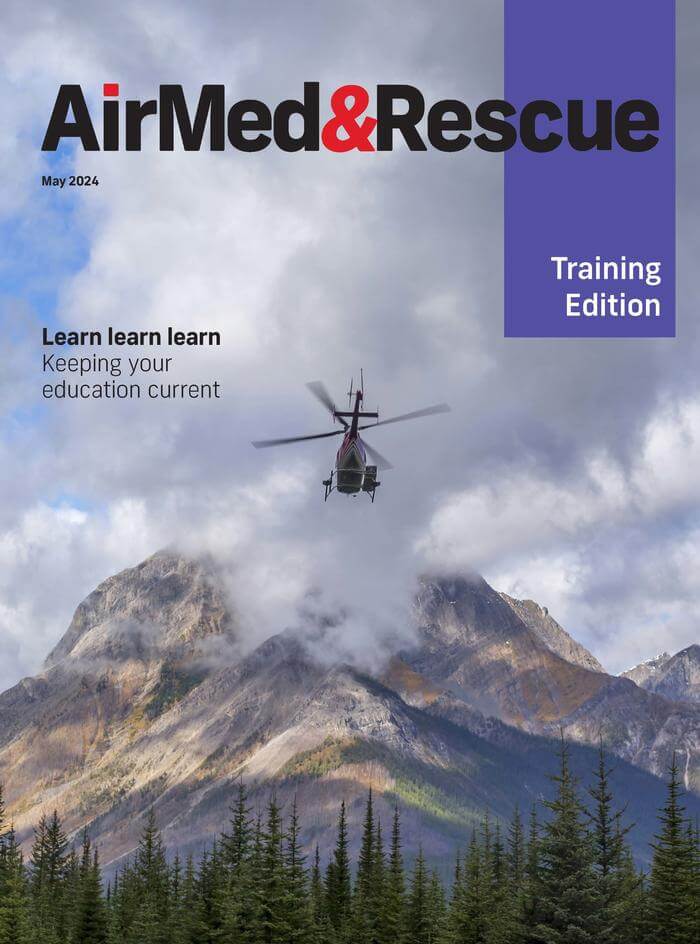Five reasons to train in a full-flight simulator

Mikko Kallio, Coptersafety’s Head of Training, describes how simulation for helicopter training can be superior and lists the benefits of full-flight simulators
Pilots have little margin for error in their operations. During flight, pilots are managing risk the entire time, and need to be able to make splitsecond decisions in case of emergencies. And as helicopters become more technologically advanced, pilots need to fully understand and be comfortable in digital glass cockpits. Pilots need full proficiency to fly effectively and safely.
This is where cutting-edge training – with state-of-the-art simulators and talented instructors – makes a difference. Simulatorbased training is industry supported as effective training for aviation safety. Full-flight simulators (FFS) are the most advanced flight simulation available, with a motion base and a full replica of a cockpit of a specific make, model, and series of aircraft.
Some will argue that training in a helicopter is better, stating that nothing’s more real than the actual aircraft. However, FFS offer a multitude of benefits, including enhanced realism.
1. Safety of the pilot and crew
The most obvious benefit of an FFS is safety. An FFS is a safe environment for training operations, designed so that trainees and instructors avoid real hazards while training. Pilots can make mistakes, while performing and repeating normal and abnormal procedures, and can push a simulator farther than you would in a real aircraft.
2.Emergency training
For safety reasons, when training in a helicopter, malfunctions are simulated by pretending or reproducing the effect. Often pilots are training emergency maneuverers only in theory. However, this leaves the pilot without the needed muscle memory to perform split-second decision making. Whereas in an FFS, there are no restrictions since scenarios can be practiced over and over. Training in an FFS allows for progress on complex scenarios with no risk to personnel or aircraft.
3. Realism
An FFS can be more realistic for training purposes. Trainees can practice procedures and maneuvers to failure, past the point where an instructor in an aircraft would take control. This allows the instructor to add elements of surprise through additional complications, such as weather scenarios or equipment malfunctions. At Coptersafety, training is also customizable for different operators to include specific locations, objects, hospitals, etc for training. An FFS is a safe environment where pilots can experience realistic training with surprise elements, diagnostic process, and the ability to learn from mistakes.
4.Cost effective
Compared with actual flight time, especially for complex helicopter types in a multicrew environment, simulator training can be more cost effective. A simulator is available 24/7 for training, without having issues with weather, lighting conditions, other traffic, etc. Simulator training does not increase maintenance costs, burn fuel, or divert aircraft from generating revenue.
5. Environmental
Using an FFS instead of a helicopter, also helps move towards a more sustainable industry. An FFS produces lower emissions, a lower carbon footprint, and zero noise pollution, and it minimally impacts local areas at night.
There is no one-size-fits-all answer, but there is an answer to fit most operations and budgets. Consider simulator training. As the US National Transportation Safety Board has stated in their Safety Alert: “Consistent, standardized simulator training will help prepare pilots for the unexpected and will decrease the risk of an accident.”
At the end of the day, pilot training is about getting pilots to perform their jobs safely – consistently. FFS make a difference.
Mikko Kallio
Coptersafety’s Head of Training, Mikko Kallio is an experienced rotary and fixed wing aviator, and a consultant helicopter test pilot with search and rescue experience. He is a former rotary wing test pilot for the Finnish Border Guard, with test and evaluation knowledge and experience in nonexperimental rotary wing testing. Mikko also has broad experience in civilian fixed wing air transport operations.

May 2024
Issue
In our special training edition for May, find out how operators of all sizes are using new tools and equipment to train their pilots; discover what is the latest in technology for training hoist and winch operators; learn how air medical crew remain current and up to date with the latest techniques and procedures; and find out what goes into the essential medical kit bags that are carried into the skies; plus more of our regular content.
Editorial Team
The AirMed&Rescue Editorial Team works on the website to ensure timely and relevant news is online every day. With extensive experience and in-depth knowledge of the air medical and air rescue industries, the team is ready to respond to breaking industry news and investigate topics of interest to our readers.
